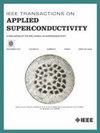基于液氢冷却超导电感的电动汽车超高速充电用dc - dc变换器的研究
IF 1.7
3区 物理与天体物理
Q3 ENGINEERING, ELECTRICAL & ELECTRONIC
引用次数: 0
摘要
为了实现2050年的碳中和,必须实现越来越多的纯电动汽车(bev),以减少移动部分的二氧化碳排放。纯电动汽车普及的障碍之一无疑是充电时间过长。在高功率、高电压、大电流条件下,可实现更短的充电时间。虽然基于ac - dc (ACDC)电源转换器的传统充电器从电网接收电力显示出技术上的高效率,但从发电到电池充电的总体效率并不是那么高,因为通过功率路径的效率倍增,通常低于90%。dc - dc (DCDC)升压变换器技术使我们不仅可以很好地利用可再生能源,而且可以通过直接接收可再生能源的方式实现非常高的充电效率。大电流充电的瓶颈是传统电感的电流容量,用“超导线圈”代替普通电感将大大提高电感的电流容量。我们设计并展示了超导DCDC (SCDCDC)双升压变换器,以证明其作为提供高电压大电流的超高速充电器的优异潜力。我们采用Bi2223和MgB2线圈设计了SCDCDC。在之前的研究中,MgB2电感转换器已经在液氢冷却条件下进行了标称运行,在液氦冷却条件下,其输出功率高达15千瓦,效率超过95%。本文章由计算机程序翻译,如有差异,请以英文原文为准。
Developing a New DC-to-DC Converter for Ultra-Fast Charges of Electric Vehicles Using Superconducting Inductors Cooled With Liquid Hydrogen
Toward 2050 carbon neutral, an increasing number of Battery Electric Vehicles (BEVs) must be achieved to reduce CO2 emission out of the mobility section. One of the barriers for spreading BEV use is definitely long charging time. Shorter charging time would be realized with very high power, higher voltage and higher current. Although conventional chargers, which are based on AC-to-DC (ACDC) power converters, receiving power from utility grids shows technologically high efficiency, the overall efficiency from power generation to battery charge is NOT so high due to multiplied efficiencies through the power path going down, typically below 90%. DC-to-DC (DCDC) boost converter technology allows us not only to make good use of renewable energy but to achieve very high charging efficiency by the way of direct power receiving from renewable sources. The bottle neck for large current charging is the current capacity of conventional inductors, which would be drastically improved by replacing the normal inductor to “superconducting coil”. Our group has designed and demonstrated a superconducting DCDC (SCDCDC) double-boost converter to prove the excellent potential as ultra-fast charger providing high voltage with large currents. We designed the SCDCDC by using Bi2223 and MgB2 coils. The converter with the MgB2 inductor which has already demonstrated nominal operation with liquid hydrogen cooling in a previous research, showed high efficiencies larger than 95% up to 15 kW of output power operations with liquid helium cooling.
求助全文
通过发布文献求助,成功后即可免费获取论文全文。
去求助
来源期刊

IEEE Transactions on Applied Superconductivity
工程技术-工程:电子与电气
CiteScore
3.50
自引率
33.30%
发文量
650
审稿时长
2.3 months
期刊介绍:
IEEE Transactions on Applied Superconductivity (TAS) contains articles on the applications of superconductivity and other relevant technology. Electronic applications include analog and digital circuits employing thin films and active devices such as Josephson junctions. Large scale applications include magnets for power applications such as motors and generators, for magnetic resonance, for accelerators, and cable applications such as power transmission.
 求助内容:
求助内容: 应助结果提醒方式:
应助结果提醒方式:


